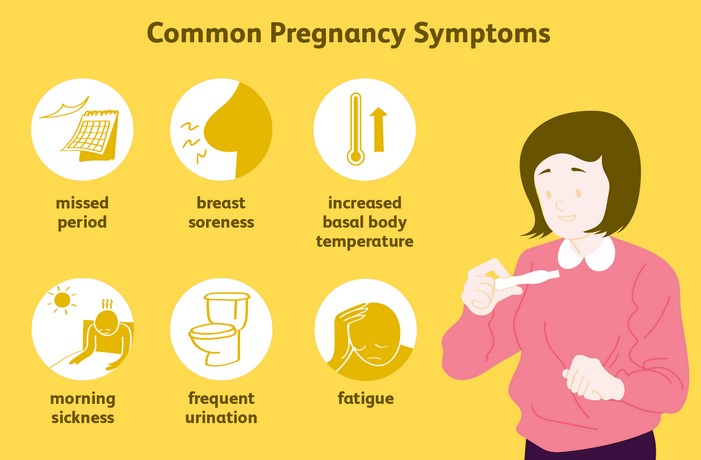
Pregnancy is an exciting and life-changing experience, but for many women, identifying the early signs of pregnancy can be challenging. The first few weeks after conception can be a confusing time, with some symptoms overlapping with the premenstrual phase. Recognizing the early signs of pregnancy can help women take the necessary steps to ensure they receive appropriate care and support. While the most obvious sign of pregnancy is a missed period, there are several other early indicators that can signal the start of pregnancy, some of which may appear as soon as one week after conception. In this article, we’ll explore the common signs to look out for and provide helpful tips on how to confirm your pregnancy early.
1. Common Early Signs of Pregnancy
Recognizing early signs of pregnancy requires careful attention to your body’s changes. Each woman experiences pregnancy differently, so the signs may vary in intensity and duration. However, several symptoms are widely recognized as common early indicators.
1.1. Missed Period
A missed period is one of the most common and earliest signs of pregnancy. For women with regular menstrual cycles, this is often the first sign that something may be different. However, some women experience light bleeding or spotting even when pregnant, which can be mistaken for a period. If you have missed your period, it’s a good idea to take a pregnancy test to confirm.
1.2. Morning Sickness
Morning sickness, which refers to nausea and vomiting, often occurs in the early weeks of pregnancy. Despite its name, morning sickness can happen at any time of the day and can last for weeks or months. While it can be inconvenient and uncomfortable, it’s typically a sign that the body is adjusting to the hormonal changes associated with pregnancy.
Though morning sickness is commonly associated with pregnancy, it does not affect all women. Some may experience it intensely, while others may not have any nausea at all.
1.3. Fatigue
Pregnancy causes significant hormonal shifts that can leave you feeling unusually tired or fatigued. The body is working hard to support a growing baby, which often leads to a significant drop in energy levels. Increased levels of progesterone, a hormone that rises during pregnancy, can also make you feel more fatigued than usual.
If you’re feeling unusually tired despite getting enough sleep, it may be one of the early signs of pregnancy, particularly in the first few weeks after conception.
1.4. Breast Changes
Hormonal fluctuations in early pregnancy can cause noticeable changes in your breasts. You may experience tenderness, swelling, or soreness, and your nipples might darken in color. Some women report a feeling of heaviness or fullness in their breasts as early as one to two weeks after conception.
These changes are a response to the body’s preparation for breastfeeding and can be an early indicator of pregnancy.
1.5. Frequent Urination
Increased frequency of urination is another common early sign of pregnancy. In the early weeks, the hormone human chorionic gonadotropin (hCG) increases blood flow to the kidneys, which results in the need to urinate more often. As the uterus expands, it can also put pressure on the bladder, further contributing to this symptom.
While frequent urination may occur later in pregnancy, it can begin as early as a few weeks after conception.
2. Subtle Early Signs of Pregnancy
In addition to the more obvious symptoms, there are also some subtler signs that can be indicative of pregnancy. These signs are often easy to overlook or attribute to other conditions, so it’s important to be mindful of your body’s changes.
2.1. Mood Swings
Hormonal changes during early pregnancy can lead to mood swings, which may make you feel more emotional or irritable than usual. Increased progesterone levels, in particular, can have an impact on your mood, leading to feelings of anxiety, sadness, or irritability.
Mood swings are a common symptom of early pregnancy and can sometimes be mistaken for premenstrual symptoms, which is why it’s important to pay attention to any other signs that might accompany them.
2.2. Food Cravings and Aversions
Pregnancy often brings about changes in taste and smell. Some women experience intense food cravings, while others may develop aversions to foods they once enjoyed. These cravings and aversions can be quite specific, such as a sudden craving for pickles or an aversion to meat. The exact cause of these cravings is not entirely understood, but they are believed to be connected to hormonal changes in the body.
If you find yourself suddenly craving foods you’ve never had a strong desire for before, or if certain foods start to make you feel sick, this could be an early sign of pregnancy.
2.3. Headaches and Dizziness
Due to hormonal changes and increased blood volume, many women experience headaches or dizziness in the early stages of pregnancy. These symptoms can be mild to moderate and may occur more frequently than usual. It’s important to stay hydrated and avoid dehydration, as it can worsen these symptoms.
While these signs can be attributed to other factors like stress or lack of sleep, they should be monitored, especially if they occur along with other signs of pregnancy.
2.4. Changes in Vaginal Discharge
Some women notice a change in vaginal discharge early in pregnancy. The discharge may become thicker, creamier, or more abundant. This change is due to increased blood flow to the pelvic area and the body’s preparation for pregnancy. It’s typically harmless, but if the discharge is accompanied by a foul odor, itching, or discomfort, it could indicate an infection and should be evaluated by a healthcare provider.
3. Confirming Pregnancy: When to Take a Test
While spotting the early signs of pregnancy can provide valuable clues, the only way to definitively confirm pregnancy is through a test. A home pregnancy test measures the level of hCG, a hormone produced by the placenta shortly after implantation. These tests are most accurate when taken after a missed period, although some sensitive tests may detect pregnancy a few days before a missed period.
For the most reliable results, follow the instructions on the pregnancy test carefully. If the test is positive, it’s a good idea to schedule an appointment with your healthcare provider to confirm the pregnancy and begin prenatal care.
In some cases, the early signs of pregnancy can mimic other conditions, such as stress or illness, so if your test is negative but you still experience symptoms, consider retesting a few days later or consulting a doctor for further evaluation.
Recognizing the early signs of pregnancy is an important first step in taking care of your health and ensuring that you receive the necessary support during the early stages of pregnancy. While symptoms like missed periods, nausea, fatigue, and breast changes are common indicators, each pregnancy is unique, and signs can vary from woman to woman. If you suspect you are pregnant, take a home pregnancy test and follow up with your healthcare provider for confirmation and guidance. Early recognition and appropriate care are key to a healthy and positive pregnancy journey.




